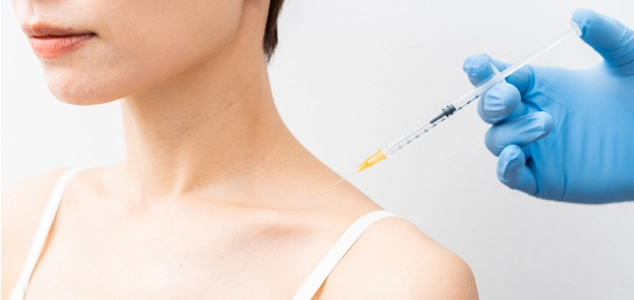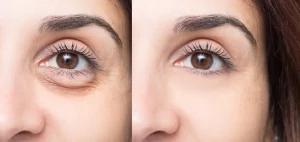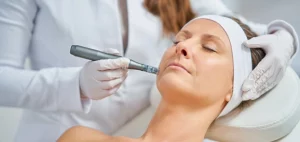Botox, renowned for its cosmetic applications, is now proving effective in treating issues with the trapezius muscles. The trapezius, a large muscle extending from the neck to the mid-back and across the shoulders, often tightens and becomes sore due to tension, overuse, or poor posture. This innovation has given rise to “Traptox,” where Botox injections into the trapezius muscles help relax them, offering both therapeutic relief and cosmetic benefits.
Traptox is celebrated for its effectiveness, speed, and minimal invasiveness, making it an excellent choice for individuals seeking to alleviate pain and improve their appearance simultaneously.
In this blog, we’ll delve into the intricacies of Traptox, exploring its advantages, procedural details, costs, and what to anticipate before and after this beneficial treatment. For those considering comprehensive cosmetic solutions, exploring options for Best Botox treatment in Manhattan, New York City could seamlessly complement your Traptox experience.
What is Traptox?
Traptox refers to the administration of Botox injections into the trapezius muscles. The trapezius is a large muscle that extends from the neck down to the mid-back and out to the shoulders. Traptox aims to relax these muscles, providing both aesthetic and therapeutic benefits. This treatment is gaining popularity for its effectiveness in reducing muscle tension, and pain, and even in reshaping the shoulder and neck areas for a more streamlined appearance.
What are the Benefits of Botox for Trapezius?
Botox for the trapezius offers several advantages:
Pain Relief
Alleviates chronic neck, shoulder, myofascial pain syndrome, and upper back pain.
Muscle Relaxation
Reduces muscle tension and spasms.
Improved Posture
Helps improve posture by reducing muscle overactivity.
Creates a slimmer, more defined neck and shoulder line, enhancing overall appearance.
Where Do You Inject Botox in the Trapezius Muscle?
Botox is typically injected into specific points along the trapezius muscle thickness. These points are identified based on individual anatomy and areas of muscle overactivity or pain. The injections are strategically placed to target the most problematic areas, ensuring maximum temporary relief and aesthetic improvement.
How Many Units of Botox Do You Need for Trapezius?
The number of Botox units required for the trapezius muscles varies based on individual muscle mass and the severity of the condition being treated. On average, patients may need between 50 to 100 units per side. However, the exact dosage will be determined by the healthcare provider based on a thorough assessment.
How Long Does Botox in Traps Last?
The effects of Botox on the trapezius muscles typically last between 3 to 6 months. The duration can vary depending on the individual’s response to the treatment and the amount of Botox used.
Botox For Trapezius Before and After
Before undergoing Botox treatment, many individuals experience significant muscle tension, pain, and a bulkier appearance of trapezius hypertrophy. After treatment, patients often report reduced pain, less muscle tension, improved posture, and a more streamlined neck and shoulder contour.
Can Botox in the Trapezius Muscle Help Headaches?
Yes, Botox in the trapezius muscle can help with headaches, particularly tension headaches and some types of migraines. By reducing muscle tension in the neck and shoulders, the injection of Botulinum toxin can alleviate the stress and strain that contribute to headache pain.
Can Botox in the Trapezius Muscle Help Neck Pain?
Botox injections in the trapezius can be very effective in relieving neck pain. By relaxing the muscles, Botox reduces the tension and discomfort associated with chronic neck pain.
Can Botox in the Trapezius Muscle Help Pain?
Yes, Botox can help alleviate various types of pain in the trapezius region. This includes chronic muscle pain, pain from muscle spasms, and pain related to overuse or tension.
Can Botox in the Trapezius Muscle Help Shoulder Pain?
Botox can also help with shoulder pain, especially when it’s related to muscle tension or spasms in the trapezius. By relaxing these muscles, it can reduce the strain and discomfort in the shoulders.
Botox Shoulder Slimming Before and After
Before Botox treatment for shoulder slimming, patients may have a more pronounced, bulky appearance in their upper shoulders. After treatment, the shoulders typically appear more slender and streamlined, with a reduction in the bulky appearance of the trapezius muscle.
Can Botox in the Trapezius Muscles Help Treating Tension and Migraine?
Botox is often used to treat tension and migraine headaches. By relaxing the trapezius muscle, Botox can reduce the frequency and severity of these headaches, providing significant pain relief for sufferers.
How to Get Smaller Traps?
Botox can be an effective way to reduce the size of the trapezius muscle. By injecting Botox into these muscles, they relax and atrophy over time, leading to a smaller, less pronounced appearance.
How to Relax Traps?
To relax the trapezius muscles, consider:
Botox Injections
Directly target muscle tension.
Stretching Exercises
Regular stretching can help.
Massage Therapy
Relieves muscle tension.
Heat Therapy
Applying heat can relax muscles.
Pros and Cons of Botox For Trapezius
Pros
- Effective pain relief.
- Muscle relaxation.
- Improved posture.
- Cosmetic enhancement.
- Non-surgical treatment.
Cons
- Temporary effects requiring repeat treatments.
- Muscle weakness
- Potential side effects.
- Cost considerations.
How Much Does Botox Cost for Trapezius?
The cost of Botox for trapezius muscles can vary widely based on geographic location, the provider’s experience, and the amount of Botox needed. On average, treatment can range from $500 to $1,200 per session.
What are the Side Effects of Botox for Trapezius?
Common side effects include:
- Pain at the injection site.
- Bruising.
- Muscle weakness.
- Flu-like symptoms.
- Rarely, difficulty swallowing or breathing if the injection affects nearby muscles.
Botox for Posture
By relaxing the trapezius muscles, Botox can help improve posture. Reduced muscle tightness allows for a more natural alignment of the neck and shoulders, promoting better posture over time.
What are the Downsides of Traptox?
Downsides include the temporary nature of the treatment, the need for repeat injections, potential side effects, and the cost. Additionally, improper administration can lead to complications.
What Not to Do After Trap Botox?
After receiving Botox in the trapezius, avoid:
- Strenuous exercise for at least 24 hours.
- Massaging or rubbing the injection site.
- Lying down for 4 hours post-injection.
- Excessive heat exposure like saunas or hot tubs for 24 hours.
What Kind of Doctor Does Trap Botox?
Typically, a board-certified dermatologist, plastic surgeon, or a specialist in cosmetic or aesthetic medicine administers Botox for the trapezius. It is important to choose a provider with experience in this specific type of Botox injection.
Frequently Asked Questions
Will insurance cover trapezius Botox?
Insurance coverage for Botox injections in the trapezius muscles, commonly known as Traptox, varies. Typically, insurance covers Botox for medical purposes, such as treating trapezius hypertrophy, chronic migraines, or muscle spasms, if deemed medically necessary. However, coverage for cosmetic purposes, like reducing muscle bulk or relieving muscle contractions, is usually not covered.
Does TrapTox injection hurt?
Pain levels during Traptox injections can vary from person to person. Generally, discomfort is minimal and brief. Providers often use small needles and may apply topical numbing cream to reduce any potential discomfort. Some individuals may feel mild stinging or a sensation similar to a pinprick during the injections. Overall, many find the procedure manageable and well-tolerated.
Barbie Botox Isn’t Suitable for All?
Barbie Botox, which refers to using Botox to achieve a smooth forehead appearance, may not be suitable for everyone. Individuals with certain medical conditions, such as neuromuscular disorders, or those who are pregnant or breastfeeding, are typically advised against Botox injections. Additionally, those with unrealistic expectations about the results may not be suitable candidates.
Can you get Botox on your neck?
Yes, Botox injections can be used on the neck to address various concerns, such as neck bands (platysmal bands), and wrinkles, or to achieve a smoother appearance. Botox works by temporarily relaxing targeted muscles, which reduces the appearance of wrinkles and lines in the treated area. It can also be used for medical purposes, such as alleviating muscle spasms or tension in the neck. The procedure involves injecting Botox into specific muscular tension of the neck, and the effects typically last several months before requiring maintenance treatments.
Does injecting botulinum toxin into the masseter muscles change the thickness of the skin?
Injecting botulinum toxin into the masseter muscles typically reduces their size over time due to muscle function relaxation, but it generally does not affect the thickness of the skin directly. The treatment focuses on slimming the muscle itself rather than altering subcutaneous (under the skin) thickness.

About The Author
Dr. Syra Hanif M.D.
Board Certified Primary Care Physician
Dr. Hanif is the Director of Aesthetic Medicine. She is a board-certified physician in Aesthetic Medicine who specializes in using non-surgical alternatives in order to enhance one's appearance through Botox and fillers.
Read More











